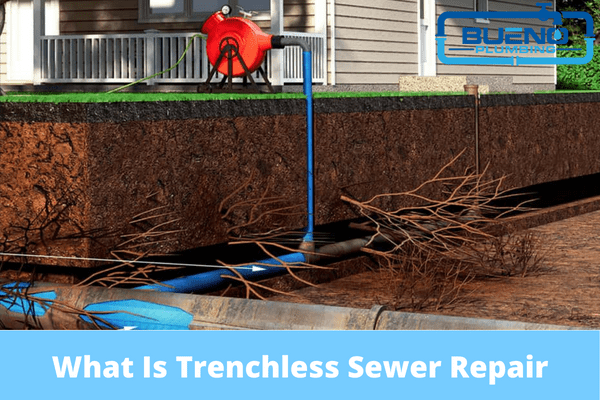There is no question that the work must be done when a new sewage line needs to be installed. Restoring correct service is the only method to fix your plumbing in working order, regardless of whether damaged fittings or tree roots are creeping into your pipes. What about the havoc a deep dig will cause in your yard? Thankfully, there are different possibilities. Your landscape is not harmed by the trenchless sewage pipes that link your house to the central sewer systems.
For homeowners, sewer repair tasks may be a significant burden. The correct trenchless sewer repair technique can help you avoid these problems, which include being expensive, time-consuming, and disruptive.
This article will discuss trenchless sewage repair, various trenchless repair techniques, and some advantages and disadvantages.
What Is Trenchless Sewer Pipe Repair?
Trenchless sewage repair is a way to fix sewer pipes without digging up and removing many of the flooring, foundation, and walls to expose the pipes in the structure. Instead of costly, disruptive trench digging followed by conventional pipe repair and subsequent restoration of damaged surfaces, trenchless pipe repair physically fixes an existing pipe by employing the failed or deteriorating pipe as a host (floors, walls, foundation, cabinetry, etc.).
By definition, “trenchless” merely refers to the absence of trenches. Imagine cutting a long, deep path right through the base of the structure you are standing in. Despite being commonly employed throughout the 20th century and the present, this traditional pipe repair technique can potentially compromise the structural integrity of your building’s slab. Once the plumbing work is finished, the structure also necessitates considerable follow-up repairs. Trenchless technology has made this danger and additional price unnecessary.
Various Trenchless Sewer Repair Methods
Bursting Pipe
A trenchless repair technique called pipe bursting entails breaking and enlarging the old pipe while replacing it with new high-density polyethylene (HDPE) pipes. To do this, a head—also referred to as a “bursting head or bullet”—is pulled through the rusted pipe. While dragging and placing the new pipe behind it, the head breaks the old pipe.
Slip Lining
Slip lining involves inserting an epoxy liner into an existing sewer lateral as a trenchless repair method. In essence, a “pipe inside a pipe” is created. It’s vital to remember that the Bay Area sanitary district authorities often do not approve of slip-lining.
Cure-in-Place Pipe (CIPP)
The technical name for slip lining is “cured in place” or “CIPP.” The existing pipe is lined with a resin-soaked liner, which is heated to expand and cure the liner in place.
The Advantages Of Installing A Trenchless Sewer Line
Installing a sewage line without digging a trench is less disruptive than replacing an existing sewer line. Incorporating charges for landscaping or driveways also results in a cheaper overall repair cost.
The Disadvantages Of Trenchless Sewer Line
Trenchless sewage lines might be more expensive up front, but the need for landscape maintenance sometimes offsets this expense. If an accurate estimate is not made, you can be stuck paying for road repairs where your line meets the public roadway.
Get in touch with our trained professional at Bueno Plumbing if you are experiencing issues with the sewage line in your home. Hurry! Call us immediately if you need trenchless sewer repair solutions.



